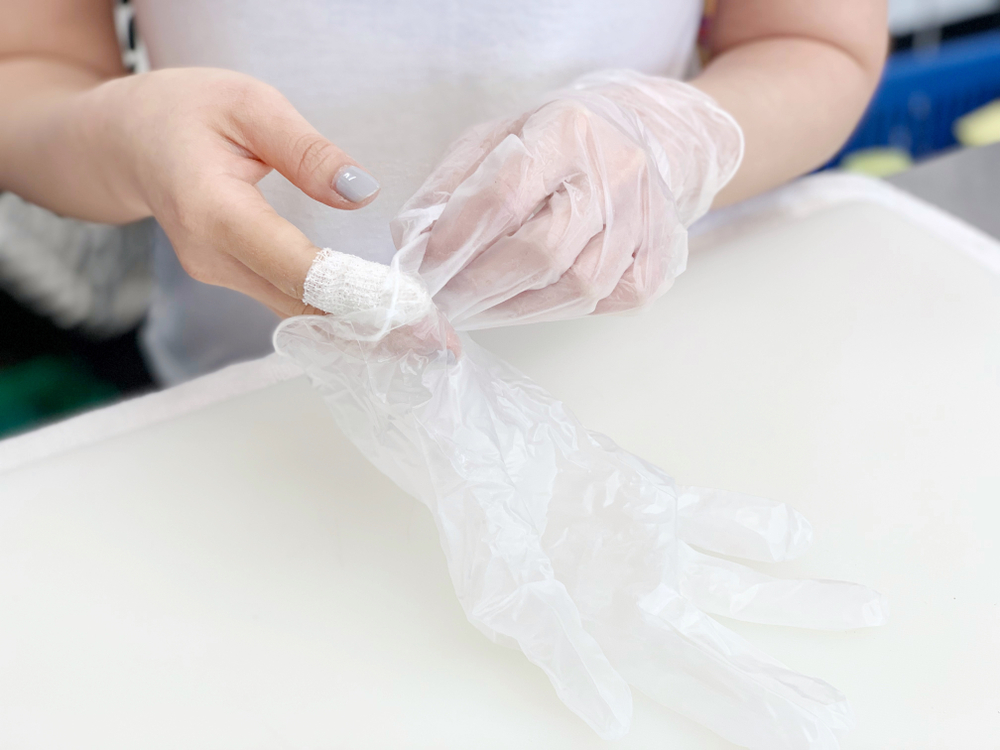How To Treat Minor And Not So Minor Cuts In The Workplace

Even if you have the best safety protocols in place there will still be occasional accidents. Sometimes the accident is an employee with a minor cut. Other times, the laceration isn’t so minor. Preventing cuts is already a part of your safety plan, but when a minor or major incident occurs is your team ready to respond?
What is a Laceration?
Before you can start treating a laceration, you need to know what it is. The term laceration is used interchangeably with “cut”. When you or an employee have a laceration, it is a tear in the skin of various depths, that leaves jagged or uneven damage.. This differs in treatment compared to other kinds of workplace injuries.
Shallow or minor lacerations with minimal bleeding are easy to manage on the job site. Deep lacerations that bleed significantly or go through the skin to the fatty or muscle layer require more serious treatment. The individual should receive professional medical attention.
Treating Cuts and Lacerations in the Workplace
The severity of the cut determines the type of treatment. Minor lacerations are often fine with minimal intervention. Deep lacerations are often beyond the scope of treatment a workplace can provide, though there are steps you can take to minimize the damage.
How to Treat Minor Cuts
A minor cut is a shallow laceration, less than an inch in length. There may be some bleeding, but not profusely. The skin around the cut can also bruise or swell. Most minor cuts are easily treatable onsite with a stocked first-aid kit.
- If the cut is bleeding, apply direct pressure to the wound with a clean cloth, piece of gauze, or tissue.
- Wash your hands before caring for a cut.
- Remember, the solution to pollution is dilution! Clean the wound by flushing it thoroughly with room temperature tap water.
- Pat the area dry and apply a sterile bandage.
- ONLY apply a solution or ointment IF your physician/healthcare provider has directed it. NEVER put any solution on a wound that was not discussed or recommended by your healthcare provider.
- Keep the bandage clean and dry. Change it daily, and do not reuse bandages.
Check often for signs of infection such as increased redness, warmth, foul odors and excess discharge. If you suspect any signs of infection, contact your healthcare provider immediately. Most mild skin wounds will heal without intervention.
Severe Lacerations
Some lacerations are treatable at work, but not all. When the steps to treat minor wounds aren’t working, it is time to seek professional medical attention. Some of the indications that the laceration needs immediate medical attention are,
- The wound is still bleeding after applying pressure for several minutes.
- Puncture wounds. For example a deep puncture wound from a nail gun can also cause potential muscle or bone damage.
- The laceration is over an inch long, requiring stitches for proper healing.
- Bone or tendons are visible.
- The cut is on the face and affecting the individual’s range of motion, or the individual is experiencing numbness and tingling in the injured area.
Employees that have not had a tetanus shot in five years or longer should see a medical professional for treatment after any minor or major cut.
Preventing Cuts in the Workplace
There are a few steps businesses can take to improve employee safety and prevent lacerations in the workplace.
- Maintain tools: Cutting tools with dull blades require more force from employees. This can cause the blade to slip. Keeping tools sharp and using blade guards will reduce the chances of accidental cuts.
- Regularly inspect PPE: Employees depend on their personal protective equipment (PPE) to keep them safe. After each use, inspect the safety gear for wear and tear, along with other damage.
- Remove all snag hazards: Earrings, necklaces, and rings all present a snag hazard and should be removed before operating tools and machinery. Clothes can also snag on equipment. Buttoned sleeves and tucked-in shirts minimize the potential risk.
- Keep workspaces clean and organized: Cluttered work areas can hide hazards like sharp tools. Keep work areas clean and return tools to their storage areas after use. Never leave cutting tools unattended.
- Train employees: All employees, regardless of their company position, should have regular safety training that includes basic first-aid.
Keeping Your Employees Safe
You can’t prevent every cut but, you can make the workplace safer for employees. It starts with safety training and educating your employees. If you need help preventing cuts in the workplace or designing a situational awareness or training class for workers, Work-Fit can help.
We also offer several other services designed to help businesses grow, while also protecting their employees’ safety and health.



